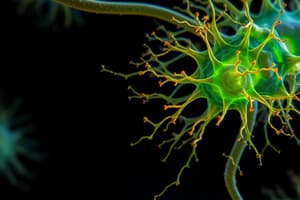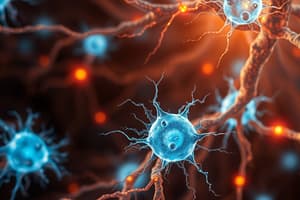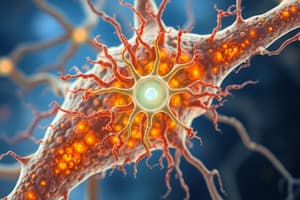Podcast
Questions and Answers
What is the primary purpose of formulating a plan?
What is the primary purpose of formulating a plan?
- To provide structure and direction (correct)
- To complicate tasks
- To follow random steps
- To waste time
Formulating a plan can increase the likelihood of achieving goals.
Formulating a plan can increase the likelihood of achieving goals.
True (A)
What is an important step in the planning process?
What is an important step in the planning process?
Setting clear objectives
The process of __________ is essential for successful project management.
The process of __________ is essential for successful project management.
Match the terms with their definitions:
Match the terms with their definitions:
Flashcards
Word 'quintins'
Word 'quintins'
An unknown word or term.
Word 'Lqge'
Word 'Lqge'
An unknown word or term.
Word 'missis'
Word 'missis'
Formal title, possibly an outdated word for 'Mrs.'
Word 'Ñ'
Word 'Ñ'
Signup and view all the flashcards
Word 'Forming'
Word 'Forming'
Signup and view all the flashcards
Study Notes
Nervous Tissue Overview
- Nervous tissue is composed of neurons and neuroglia.
- Neuroglia are 10 times more abundant than neurons.
- Neuroglia perform various functions, including maintaining the blood-brain barrier, providing structural support, regulating ion levels, and removing waste products.
Learning Objectives
- Classify neuroglia based on function and location
- Identify neuroglial cells based on their location
- Understand the structure of neuroglia in relation to their function
- Describe the function of each neuroglia
Neuroglia Classification
- Neuroglia in the central nervous system (CNS):
- Astrocytes (Protoplasmic and Fibrous)
- Oligodendrocytes
- Ependymal cells
- Microglia
- Neuroglia in the peripheral nervous system (PNS):
- Schwann cells
- Satellite cells
Astrocytes
- Star-shaped glial cells with many radiating processes.
- Two types: fibrous and protoplasmic.
- Function:
- Participate in blood-brain barrier formation
- Provide structural support.
Oligodendrocytes
- Small glial cells responsible for myelination in the CNS.
- One oligodendrocyte can myelinate multiple nerve fibers.
Microglia
- Small glial cells with short irregular processes.
- Common throughout nervous tissue.
- Mobile phagocytic cells that remove damaged cells and microorganisms.
Ependymal Cells
- Cuboidal cells lining the central canal of the spinal cord and brain ventricles.
- Produce and circulate cerebrospinal fluid (CSF).
Schwann Cells
- Glial cells responsible for myelination in the PNS
- One Schwann cell myelinates a single axon segment.
Satellite Cells
- Surround neuronal cell bodies in ganglia
- Provide supportive, nourishing, insulating and regulating microenvironment for the neurons.
Nervous Tissue Organization
- Diagram illustrating the distribution of neuroglia in the central and peripheral nervous systems shows how the different types of neuroglia are found in specific locations.
Studying That Suits You
Use AI to generate personalized quizzes and flashcards to suit your learning preferences.




